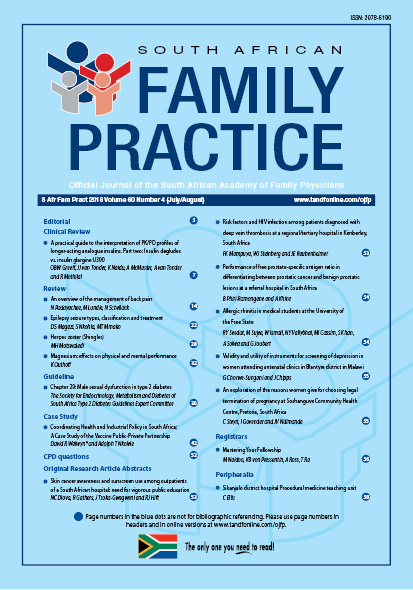An overview of the management of back pain
Keywords:
back pain, narcotics, non-narcotics, NSAIDs
Abstract
Back pain affects people across any socio-economic category and is a leading cause of absenteeism and decreased productivity in the workplace. This symptomatic condition is caused by multiple factors, making it difficult to manage. With a small proportion of people experiencing back pain due to pathological reasons, in the larger majority, back pain is due to a mechanical cause. Taking a complete history that includes identifying risk factors such as depression, poor posture, lack of exercise, older age and a physically demanding job is crucial to the effective management of the condition. Behavioural, psychological and social factors of the patient should form the backbone for treatment of back pain. Non-pharmacological management such as exercise, spinal manipulation and acupuncture should be the first-line treatment; however, if this provides poor results then pharmacological measures such as the use of non-steroidal anti-inflammatory drugs (NSAIDS) like ibuprofen or muscle relaxants such as cyclobenzaprine should be considered.
Section
Review Articles
By submitting manuscripts to SAFP, authors of original articles are assigning copyright to the South African Academy of Family Physicians. Copyright of review articles are assigned to the Publisher, Medpharm Publications (Pty) Ltd, unless otherwise specified. Authors may use their own work after publication without written permission, provided they acknowledge the original source. Individuals and academic institutions may freely copy and distribute articles published in SAFP for educational and research purposes without obtaining permission.

